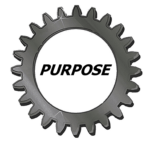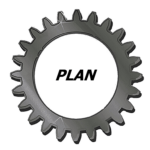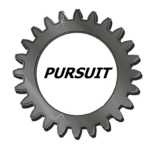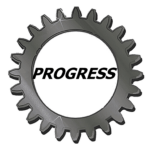Value Stream Map
Value Stream Mapping provides a holistic view of the entire production process, enabling businesses to identify bottlenecks, eliminate non-value-added activities, and optimize the flow of work.

Chapter 1: What is it?

Value Stream Mapping is a structured lean technique that helps organizations analyze the current state of their processes and design a more efficient future state. It provides a holistic view of the entire value stream, from the moment a customer places an order to its delivery. The mapping process involves identifying each step, including information flow, and measuring relevant data like cycle times, lead times, and inventory levels.
By visualizing the entire value stream, organizations can identify waste and non-value-added activities. These may include excessive waiting times, unnecessary transportation, overproduction, or redundant approval processes. Value Stream Mapping enables businesses to eliminate or minimize these inefficiencies, leading to streamlined processes, reduced costs, shorter lead times, and improved customer satisfaction.
Chapter 2 : When do I use it?

To stay ahead of the game, organizations must continuously improve their operations, eliminate waste, and streamline their processes. One powerful tool that can help achieve these goals is Value Stream Mapping (VSM). By thoroughly analyzing the flow of materials, information, and activities within a value stream, VSM enables effective planning and facilitates the identification of bottlenecks, inefficiencies, and areas for improvement.
Chapter 3: How do I use it?

Step-by-Step Guide to Filling in a Value Stream Map
1. Identify the scope: Determine which process you want to map and define the boundaries of your Value Stream Map. Consider the start and end points, as well as any external suppliers or customers involved.
2. Collect data: Gather the necessary information about the process, such as cycle times, lead times, and inventory levels. This data can be obtained through direct observation, interviews, or by analyzing existing documentation.
3. Draw the current state map: Begin by sketching the current state of your process, including all the steps and activities involved. Use symbols and arrows to represent the flow of materials and information. Keep the map simple and easy to understand, focusing on the major value-adding steps.
4. Analyze and improve: Once you have your current state map, analyze it to identify areas of waste, bottlenecks, and non-value-added activities. Look for opportunities to improve the flow and eliminate waste. Brainstorm and implement improvement ideas, and then update your future state map to reflect the desired improvements.
Chapter 4 :Why should I use it?

Efficiency is the cornerstone of success in any business. It allows organizations to utilize resources effectively, eliminate waste, and deliver products or services to customers faster. However, achieving maximum efficiency is not always an easy feat. This is where Value Stream Mapping comes into play. By visualizing the entire value stream and identifying areas of improvement, organizations can make informed decisions to streamline processes, reduce lead times, and increase customer satisfaction. Value Stream Mapping provides a holistic view of the entire production process, enabling businesses to identify bottlenecks, eliminate non-value-added activities, and optimize the flow of work. By maximizing efficiency through Value Stream Mapping, organizations can unlock their full potential and drive progress.
Chapter 5 : Coaching Benefits
![]()
I need help…
Not all help costs money. Requests for additional information and potential application for your industry, helps us to improve the training experience, at no charge to you.
When do I need coaching services?
Coaching has proven time and time again to be a powerful tool in optimizing performance and driving efficiency in various aspects of life. Whether it is in the workplace, educational settings, or even within personal relationships, coaching has the ability to unlock untapped potential and enhance productivity. By leveraging the collective intelligence and diverse skills of a group, individuals can capitalize on their strengths, overcome challenges, and achieve remarkable results.
What do I get with coaching services?
Our Role – Quality coordinating – Work to understand your system, review your needs, and suggest process improvements.
We help you use a chosen template and apply it to your business model, with or without action plans.
Coaching includes personalized shareable document for use or for future coaching.
1 hour online coaching (one on one coaching) no minimum participates

Download a Value Stream MapTemplate
Templates are like a secret weapon in the arsenal of content creators. They provide a foundation, a starting point that saves us time and energy.
Mobile Format
By using Google Docs we offer an extensive selection of free templates, covering various categories with no special apps to download making them truly mobile. These templates are also available in Microsoft Word format. These templates are designed by professionals, ensuring a polished and visually appealing outcome. With a few clicks, we can have a well-structured document, complete with headings, subheadings, and placeholders for our content. These templates act as a guiding hand, making it easier for us to organize our thoughts and ideas effectively. They eliminate the need to spend hours formatting and styling our documents, enabling us to focus on the content creation itself.
Simplify Creation Content
The true power of templates lies in their ability to simplify and streamline the content creation process. By using pre-designed layouts and formats, we can save valuable time and effort. Rather than starting from a blank canvas and grappling with design decisions, we can simply choose a template that aligns with our desired style and purpose. This not only speeds up the creation process but also ensures a consistent and professional look for our content. Templates also allow for customization, enabling us to personalize the document according to our needs. This level of flexibility empowers us to create visually stunning content without the need for advanced design skills. Templates break down the barriers between creativity and execution, making content creation accessible to all.
Unleash Your Creativity
Effortless content creation is within our reach, thanks to the power of free templates in Google Docs and Microsoft Word. By utilizing these templates, we can simplify our workflows, save time, and produce high-quality content without the need for extensive design knowledge. Unlocking the potential of templates allows us to focus on what truly matters – our ideas, thoughts, and messages. So why start from scratch when we have a vast library of templates waiting to be explored? Embrace the convenience and unleash your creativity by utilizing the power of free templates in your next content creation endeavor.
What is a Value Stream Map?
Watch this Video.
Operational efficiency is a key aspect for businesses looking to maximize productivity and minimize waste. One effective tool that can help uncover operational inefficiencies is the Value Stream Map (VSM). The VSM is a visual representation of the entire production process, from start to finish, including both value-adding and non-value-adding activities.
As You Watch This Video
1. Henry Ford – processes were in different places and the product moved from place to place. His idea, to line up the processes by process sequence. This created a smooth transition from beginning to end. Great if you want to create one product with no variation
2. Taiichi Ohno – Toyota. Steady flow by the pull of the customer. Created a high variety at low volume. His model was to write all the process steps and determined which ones were wastes.
3. Identify the 8 wastes; waste in transport (movement); waste in inventory (excess); waste in motion (flow),; waste in waiting (queue); waste in over producing (holding inputs process inventory); waste in over processing (non value processing); waste in defects (rework/scrap); waste in human potential (unused talent).
4. Identify where is the value and where is the waste.
5. Factors to consider: how to reduce costs; eliminate steps that cause waste; improve processes that create value.
6. Time is the largest waste in an organization, time process is waiting and time processing. Goal is to eliminate / reduce non value wastes and improve value added processing.
Still need to visualize, understand the design of the value stream map and how the method is tested, see the following case studies.

Case Study 1 - Led to Manage LLC
How we used it
First examination – most immediate process starting out. Course Development
1. We started listing the processes per the deployment flow chart (see Strategic Planning Creation Course – Process / Deployment Flowchart). Process starting from the directive to create to publication.
concept2. From input to output, we documented the process owners responsible for the needed activity. (ie. MOP01 – Operations Manager to SOP01 Course Developer to COP01 Web Developer).
3. In the box was a brief description of the activity. We felt it necessary to further describe the activity at the bottom of the map.
4. Starting with the initial design meeting by MOP02 to CPO01 publish and distribution.
Lessons Learned
1. Waste 1 – transport/wait sending documents and notes by email. ACTION: during the development go to site and create a page to publish using the course template. upload all notes, web links and example course tools on to page for further process. Should eliminate 15 mins.
2. Waste 2 – defect/wait, often times waiting or reminding personnel to email and then there is file lookup and transfer, even to a working folder. Defect prevention from missing information and interpreting notes error. ACTION : Story board format that has global requirements (guiding instructions and established formats) and local requirement (notes, comments, links and example documents from Led to Manage LLC records.) Reduction in research time and adding design meeting content, potential to save 15 mins.
3. Waste 3 – defects/rework, RE-DESIGN or often referred dearly to as the development loop, which could added approximately 1 hr delivery of content for publication and delivery. ACTION: since the team has addressed potential common causes, when a special cause for the development loop is needed, the team examines the determine what in the master course template needs to be modified to help guide the tea to be more productive.
4. Waste 4 – defect/wait, often times it takes 15 min for the Web Developer to add research content, links and template, now that person can spend in draft review prior publication and delivery. ACTION; template with global formats and Web Developer can work on review, content placement and testing links as the Course Developer adds the content and make corrections collaboratively. Could save 7.5 min in critical design review meeting.
5. In all the actions above could save 1 to 2 hr development tine in the SOP01 Course Development Process. (for more tools to examine special causes like described above see Progress Developing Courses like Interrelationship, Fishbone Diagrams or 5. Why Analysis.)

